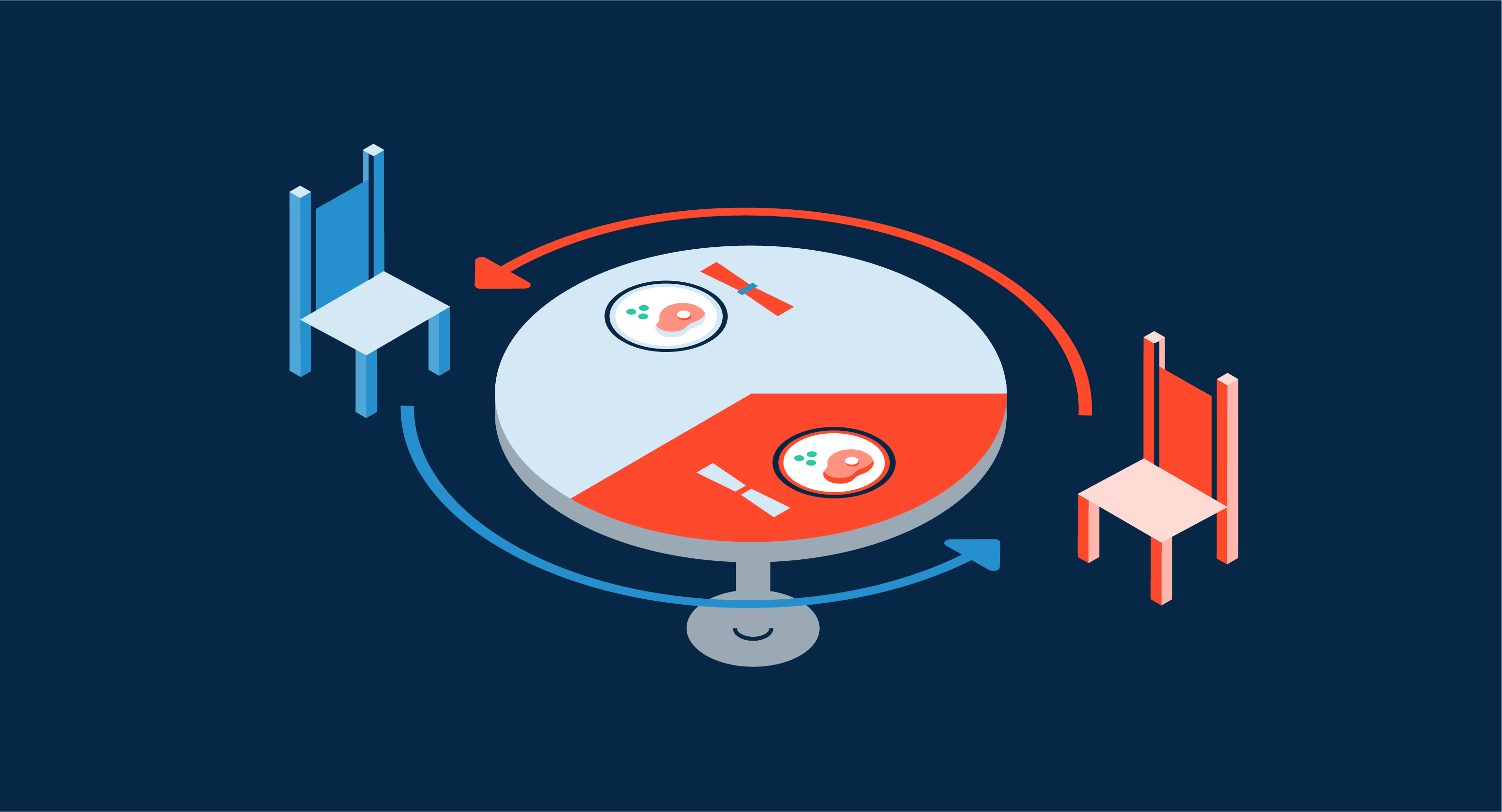
Snapchat for Business: Engaging with Millennial Audiences in a Snap
January 16, 2024
Streamline Your Workflow with these Top Client Reporting Tools
January 17, 2024A. The Digital Playground
The evolution from traditional to digital marketing has transformed the business landscape, turning the internet into a bustling digital playground. Gone are the days of relying solely on print and TV ads; today, businesses must navigate the complexities of online marketing. This shift has not only altered how companies promote their products but has also revolutionized consumer behavior. The ease of access to information, the proliferation of social media, and the convenience of online shopping have all contributed to a seismic change in the way potential customers interact with brands.
In this digital playground, clicks have become the currency of engagement. Every click represents a potential conversion, making the art of crafting compelling calls-to-action (CTAs) a crucial aspect of any successful digital marketing strategy. As we delve into effective strategies for turning leads into customers, understanding the dynamics of this digital arena becomes paramount.
B. The Conversion Conundrum
At the heart of every successful business lies the ability to convert leads into customers. But what exactly is conversion, and why is it the linchpin of business success in the digital age? Conversion, in the digital marketing realm, refers to the desired action taken by a visitor on your website. This could be making a purchase, signing up for a newsletter, or filling out a contact form.
Understanding the various types of conversion, from macro to micro, is crucial. Macro conversions, such as completing a purchase, are the primary goal, but micro conversions, like signing up for a free trial, contribute to the overall conversion journey. It’s not merely about closing a sale; it’s about cultivating relationships and guiding leads through a carefully orchestrated conversion funnel.
C. The Power of the Click
In the expansive world of digital marketing, the power of the click cannot be overstated. Clicks serve as the gateway to conversion, the moment when a passive observer transforms into an engaged participant. Crafting compelling CTAs is an art form that combines persuasive language, strategic placement, and a deep understanding of user psychology.
Think of your CTAs as the ringleader in a digital circus, orchestrating the audience’s movements. Whether it’s a “Buy Now” button or a “Subscribe for Updates” prompt, the CTA guides users through the desired journey. In this section, we’ll unravel the nuances of crafting CTAs that not only prompt clicks but also usher leads seamlessly down the conversion path.
Know Your Audience
A. Profiling Personas
In the realm of digital marketing, knowing your audience is akin to having a treasure map. Creating detailed buyer personas is the compass that guides your marketing strategies to the heart of your target demographic. It’s not just about demographics; it’s about understanding the desires, pain points, and aspirations of your potential customers.
Crafting effective buyer personas involves a mix of quantitative and qualitative data. Dive into analytics to uncover demographic details, and complement this with surveys, interviews, and social media listening to gain insights into the psychographics of your audience. The more granular your personas, the more precisely you can tailor your messaging to resonate with different segments of your audience.
B. Speaking Their Language
Once you’ve created detailed buyer personas, it’s time to speak their language. Tailoring your content to resonate with diverse personas is an art that involves understanding the nuances of communication. Different segments of your audience may respond to different tones, styles, and even humor. A conversational tone might resonate with one group, while another might prefer a more formal approach.
In this subheading, we’ll explore the language of conversion. How do you turn a casual browser into a committed buyer through your choice of words? We’ll delve into linguistic techniques, explore the power of storytelling, and unravel the psychology behind effective communication in the digital realm.
C. Data-Driven Decision Making
In the ever-evolving landscape of digital marketing, relying on intuition alone is like sailing without a compass. Enter data-driven decision-making – the compass that ensures you stay on course. Analytics tools offer a treasure trove of insights into user behavior, preferences, and engagement patterns.
This subheading will guide you through the process of leveraging data to refine audience targeting. We’ll explore the art of interpreting analytics reports, identifying trends, and translating these findings into actionable strategies. From A/B testing to user flow analysis, this section equips you with the tools to navigate the digital seas with confidence.

The Magnetic Website
A. Designing for Conversion
Your website is the digital face of your business, and its design plays a pivotal role in converting leads into customers. User-friendly design principles are the foundation upon which a conversion-centric website is built. Think of your website as a well-organized storefront—easy to navigate, visually appealing, and designed with the user experience in mind.
In this section, we’ll explore the intricacies of user-friendly design. From intuitive navigation to the psychology of color, we’ll guide you through the elements that make a website magnetic. After all, a beautifully designed website is not just aesthetically pleasing; it’s a conversion powerhouse.
B. Seamless User Experience
Reducing bounce rates and ensuring a seamless user experience go hand in hand. A user who encounters friction on your website is more likely to bounce away than convert. We’ll delve into the strategies for minimizing bounce rates through intuitive navigation, responsive design, and a user-centric approach.
Optimizing for mobile responsiveness is no longer a choice; it’s a necessity. The majority of users browse on their mobile devices, and a website that adapts seamlessly to different screen sizes is a website that maximizes conversions. Let’s explore how you can make your website a haven for both desktop and mobile users, ensuring a frictionless journey from landing to conversion.
C. Compelling Landing Pages
If your website is the storefront, landing pages are the display windows that beckon passersby. Crafting compelling headlines and copy is the secret sauce that transforms a curious click into a committed conversion. In this section, we’ll dissect the anatomy of a high-converting landing page.
From attention-grabbing headlines to persuasive copy that speaks directly to the visitor’s pain points and desires, we’ll guide you through the process of creating landing pages that don’t just capture attention but hold it. Design elements, strategically placed CTAs, and a seamless flow of information—all these contribute to a landing page that compels action.
The Art of Persuasion
A. The Influence of Social Proof
Humans are social creatures, and our decisions are often influenced by the actions and opinions of others. This psychological phenomenon forms the basis of social proof—a powerful tool in the conversion arsenal. In this section, we’ll delve into the various types of social proof and explore strategies for harnessing its influence.
Customer testimonials, reviews, and endorsements are the currency of social proof. We’ll guide you through the art of collecting and displaying testimonials effectively. Whether it’s through star ratings, user-generated content, or influencer endorsements, social proof creates a sense of trust that nudges leads towards conversion.
B. Scarcity and Urgency
Fear of Missing Out (FOMO) is a potent motivator. Creating a sense of scarcity and urgency in your offers can be the catalyst for conversion. Limited-time offers, exclusive deals, and countdowns are all tactics that trigger the fear of missing out.
In this subheading, we’ll explore the psychology behind scarcity and urgency. How can you create a sense of exclusivity without alienating your audience? What’s the sweet spot for urgency that drives action without feeling forced? Unravel the answers as we delve into the art of leveraging scarcity and urgency for conversion success.
C. Storytelling that Sells
In the digital realm, where competition is fierce and attention spans are fleeting, storytelling becomes a superpower. Your brand narrative is not just a story; it’s a journey that your audience embarks on. In this section, we’ll explore the art of brand storytelling and how it can be a driving force behind conversion.
Effective storytelling creates emotional connections. It transforms your brand from a faceless entity to a relatable character in the story of your customer’s life. We’ll guide you through the elements of compelling storytelling, from character development to plot twists, all aimed at creating narratives that resonate and, more importantly, persuade.

The Personal Touch
A. Tailored Email Campaigns
Email marketing remains a stalwart in the realm of digital communication, and when done right, it’s a potent tool for conversion. Tailoring your email campaigns to individual preferences and behaviors is the key to unlocking the personal touch that resonates with leads.
In this section, we’ll delve into segmentation strategies for targeted messaging. How do you create email campaigns that feel tailor-made for each subscriber? Automation comes into play, allowing you to send personalized, timely messages that nurture leads through the conversion journey. Discover the magic of email marketing as a personal touchpoint in the digital landscape.
B. Chatbots and Virtual Assistants
Adding a touch of humanity to digital interactions is no longer a luxury; it’s an expectation. Enter chatbots and virtual assistants—your digital concierges that provide instant, personalized support. In this subheading, we’ll explore the role of chatbots in customer engagement.
From answering FAQs to guiding users through the website, chatbots enhance the user experience. We’ll guide you through creating a seamless, personalized chat experience that not only provides assistance but also gathers valuable insights for further personalization.
C. Customer Feedback Loop
Closing the loop on customer feedback is not just about post-purchase satisfaction; it’s a continuous cycle of improvement. In this section, we’ll explore the importance of soliciting feedback at crucial touchpoints in the customer journey.
Customer feedback is a goldmine of insights into what works and what can be improved. We’ll discuss strategies for collecting feedback, whether through surveys, reviews, or direct communication channels. Harnessing this feedback loop allows you to refine your products, services, and overall customer experience—a vital element in fostering brand loyalty.


Overcoming Objections
A. Proactive Objection Handling
Anticipating objections is the secret weapon of successful converters. In this section, we’ll delve into the art of proactive objection handling. By conducting thorough customer research, you can identify potential objections before they even arise.
Crafting preemptive responses to common objections not only showcases your transparency but also builds trust. We’ll guide you through the process of creating an objection-handling playbook that equips your sales and support teams with the tools to address concerns effectively.
B. Building Trust through Transparency
In a digital landscape crowded with options, trust becomes a rare commodity. Transparency is the currency of trust, and in this subheading, we’ll explore the role of open communication in overcoming skepticism.
From transparent product information to clear pricing structures, we’ll guide you through the strategies for building trust with your audience. Leveraging case studies and success stories becomes a powerful tool in showcasing your brand’s authenticity and reliability.
C. Post-Purchase Support
The customer journey doesn’t end with a purchase; it evolves into a relationship. Providing stellar post-purchase support is not just a nicety; it’s a strategic move to nurture brand loyalty. In this section, we’ll explore how post-purchase support contributes to the overall conversion journey.
Exclusive perks, dedicated customer support channels, and ongoing engagement strategies all play a role in post-purchase support. We’ll guide you through creating a post-purchase experience that not only meets expectations but exceeds them, turning customers into loyal brand advocates.

Metrics that Matter
A. Conversion Rate Optimization (CRO)
In the dynamic world of digital marketing, understanding and optimizing your conversion rates is paramount. Conversion Rate Optimization (CRO) is not just a buzzword; it’s a science that involves continuous testing, analysis, and refinement.
In this section, we’ll explore strategies for maximizing conversion rates. A/B testing becomes your laboratory, allowing you to experiment with different elements and identify what resonates best with your audience. Analyzing user behavior provides invaluable insights into areas of improvement. By the end of this subheading, you’ll be equipped to elevate your CRO game and fine-tune your conversion machine.
B. Return on Investment (ROI)
While conversion is a critical metric, understanding its impact on the bottom line is equally crucial. Return on Investment (ROI) measures the effectiveness of your marketing efforts in generating revenue. In this part, we’ll guide you through the process of calculating the true ROI of your digital marketing endeavors.
Aligning your marketing spend with revenue goals requires a strategic approach. We’ll explore how to track and attribute conversions to specific campaigns, channels, or touchpoints. By the end of this subheading, you’ll have a comprehensive understanding of how your marketing investments translate into tangible returns.
C. Customer Lifetime Value (CLV)
The journey from lead to customer is not a one-time transaction; it’s the beginning of a relationship. Understanding the long-term value of a customer is encapsulated in the metric known as Customer Lifetime Value (CLV).
In this section, we’ll unravel the intricacies of CLV and its role in sustained business growth. Strategies for increasing CLV, from loyalty programs to personalized offerings, will be explored. By understanding the interconnected relationship between CLV and business growth, you’ll be poised to not just acquire customers but to cultivate lasting relationships that contribute to the longevity of your brand.
Conclusion
In the grand symphony of digital marketing, conversion is the crescendo, the moment when a lead transforms into a customer. Armed with the strategies explored in this comprehensive guide, you’re not just navigating the seas of online marketing; you’re mastering them. From the digital playground to the art of persuasion, this journey from leads to customers is a dynamic, ever-evolving dance—a dance that, with the right moves, leads to conversion success.




